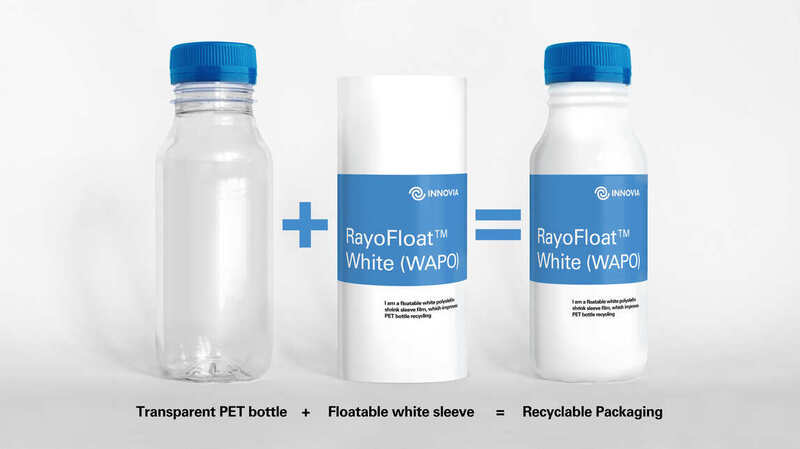Innovia unveils white floatable PO shrink film for light-sensitive products

Innovia Films has extended its product range for floatable polyolefin shrink films that contribute to the light blocking properties of the shrink sleeves on containers for dairy, food supplements, and nutritional products.
The new film is a low density white film made from polyolefin (WAPO) that maintains floatability when printed.
The material science pioneer, that manufactures polyolefin film materials for labels and packaging, said the film will be produced at the European Innovia site in Płock, Poland.
“We have seen a need in the market to create an opaque film that floats and can be combined with transparent PET bottles. Many light-sensitive products are packed in HDPE bottles that are not recycled back into food grade packaging – at least not at the moment,” explains Simon Huber, managing director Innovia Europe. “This innovation is a gamechanger and can enable dairy brands and other companies that have light-sensitive products to switch to a transparent PET bottle that can and will be recycled back into food grade packaging – closing the loop.”
Lucija Kralj, business unit director labels EMEA, notes that the new Packaging and Packaging Waste Directive (PPWR) that is being created by the EU will be a big driver of design for recycling.
“As all packaging will need to be recyclable by 2030 and certain recycled content targets will be mandatory, a transparent PET bottle with a floatable sleeve that automatically detached during sorting and recycling is the ideal solution,” Kralj explains. “We have patented the film solution that will be manufactured in Poland but will be available globally.“
Just as the clear film range, RayoFloat white APO facilitates easy separation and removal of labels from PET bottles and other types of plastic containers in the recycling process.
It automatically detaches during sorting and recycling in the sink/float process and thus enables a high yield of high-quality PET flakes that are the basis of food grade recycling. The film also supports a closed loop in the production facility and contains up to 20 per cent post-industrial recycled content.
Related content
Source: foodanddrinktechnology.com

